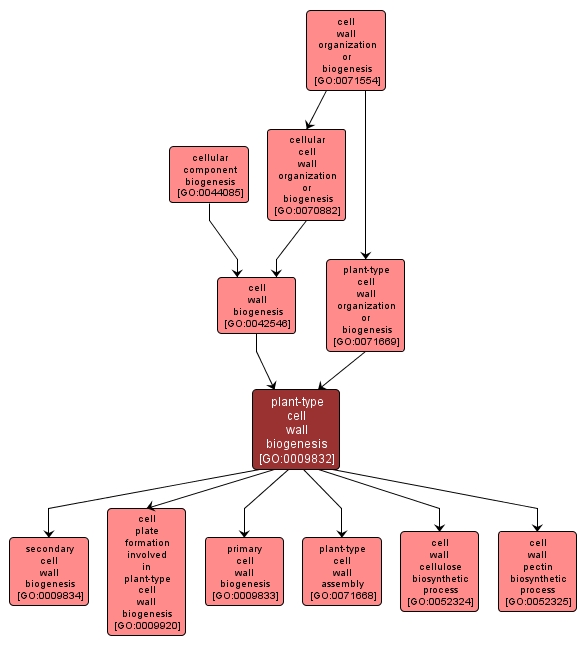GO TERM SUMMARY
|
| Name: |
plant-type cell wall biogenesis |
| Acc: |
GO:0009832 |
| Aspect: |
Biological Process |
| Desc: |
The chemical reactions and pathways resulting in the formation of the cellulose and pectin-containing cell wall. An example of this is found in Arabidopsis thaliana. |
Synonyms:
- cell wall anabolism
- cell wall assembly
- cellulose and pectin-containing cell wall biogenesis
- cell wall biosynthetic process
- cell wall synthesis
- cell wall formation
|














